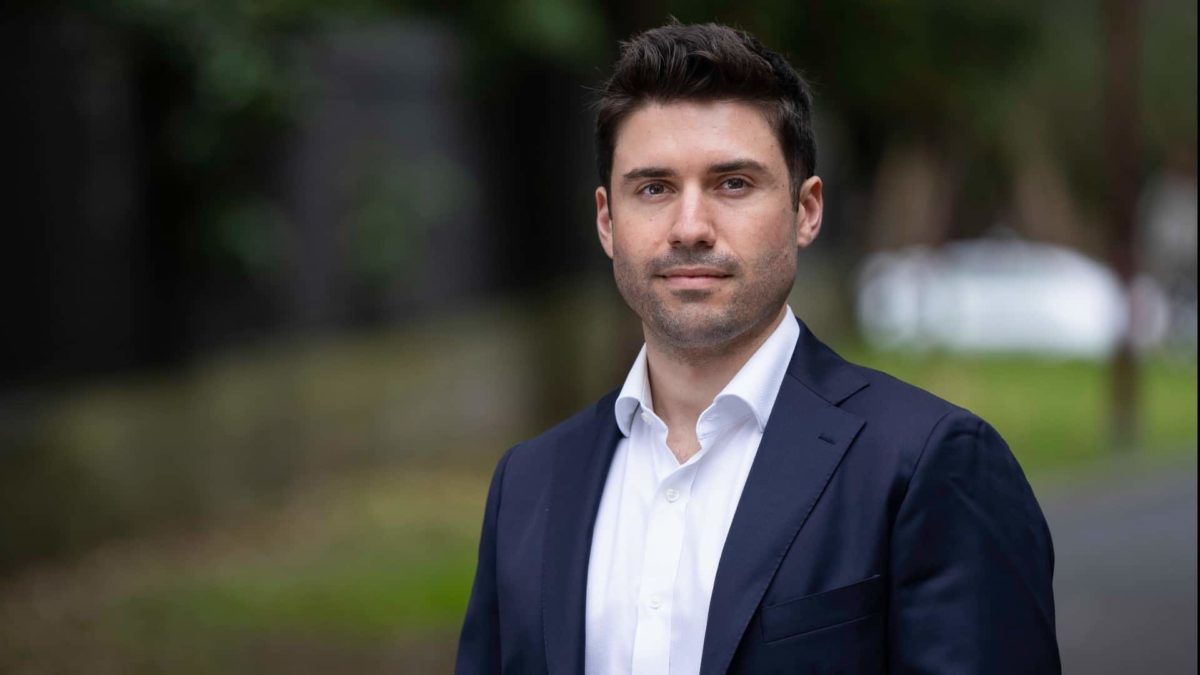Ask A Fund Manager
The Motley Fool chats with fund managers so that you can get an insight into how the professionals think. In this edition, Monash Investors portfolio manager Sebastian Correia reveals how the largest holdings in his fund are built for returns, not drama.
Investment style
The Motley Fool: How would you describe your fund to a potential client?
Sebastian Correia: Monash Investors is classified as a boutique Australian equities long/short hedge fund. It was founded about 10 years ago by my colleagues Simon Shields and Shane Fitzgerald.
An important trait of the fund [is] we're style-agnostic. So we don't consider ourselves growth investors. We don't consider ourselves value investors. We've been both at the same time or one or the other. Our overall objective is to make double-digit returns after fees over the cycle. So wherever we can best allocate our capital to make the most money for investors is where we'll go.
The fund has two vehicles — a listed and an unlisted one. The listed one is called the Monash Absolute Active Trust (ASX: MAAT), and the unlisted one is the Monash Absolute Investment Fund.
They both follow the same strategy, but the MAAT — or "mate", as we like to call it — also has the additional characteristic where it targets a 6% per annum yield in terms of distribution that's paid quarterly to investors. And that's, I'd say, the main difference between the two.
We don't track it to an index or anything like that. So we're not constrained by a market cap — we can invest all along the market cap universe of the ASX, provided there's enough liquidity to manage our risk appropriately.
Lastly, we focus on bottom-up stock picking. We like to refer to a suite of recurring business situations and patterns of behaviour that's been demonstrated over time by management, investors, consumers, regulators for idea generation. And from that, the core investment ideas are then supported by pretty detailed and intricate DCF [discounted cash flow] evaluation modelling to kind of inform, not only the decision itself, whether to go long or short, but also the weight allocation in the portfolio.
Biggest convictions
MF: What are your two biggest holdings?
SC: It's been a volatile period since the start of January. The weights did fluctuate with the price movements but, currently, our two biggest holdings in this fund are a company called Johns Lyng Group Ltd (ASX: JLG), and the second one is OFX Group Ltd (ASX: OFX).
So the first one, Johns Lyng Group, is an insurance building and restoration services provider in Australia, and very newly expanding into North America, which I'm very excited about.
I really like the company because it's basically just demonstrated what the power of an extremely high-quality management team, and effective incentivising schemes within the company can achieve.
Basically what it does is it'll provide restoration, construction and repairing services on behalf of insurance providers within Australia, and soon to be America as well. Think any sort of damage that happens, the insurance providers will receive the claims and insurance providers will then go out and engage in Johns Lyng or select Johns Lyng as part of a panel of other building restoration service providers, to engage in the work.
It just so happens that Johns Lyng has been by far the best. It's also got in a very strongly entrenched competitive position in Australia as a result. It's by far the biggest, which is a meaningful, competitive edge in the sense that if you're a large insurance provider and you get hit with something like a flood or a large fire across a multitude of different properties, you want to be able to engage with a third-party service provider to repair the damaged properties that you can rely on. And to provide it not only with good quality and to the specs that you require, but also in the requisite timeframe. Because, some of the work, it's just at such a scale that a smaller service provider can't actually adequately respond to the needs of insurance providers.
I think the management very rightly focused on that first and then entrenched themselves in Australia before looking abroad. That set them up for a great deal of success.
One [of] the other things that I like about it, it's positioned itself at the growth tip of a defensive industry. Insurance building restoration work is not sexy like some of the tech stuff. It's pretty non-discretionary spending. If a house gets damaged, you need it to get repaired, which I really like. And it's leveraged at property market expansion and an increase in severity in weather events, which we're starting to see basically across the world.
It's also really asset-light, so it's very, very strong in cash flow generation. It's asset-light, so it can expand through a very effective capital allocation by management. I really like that. And this either allows them to focus on expansion acquisitions, like they have just done in the [United] States, or provide a return to investors through dividends.
We've been in it for a while and we've made a decent return on it. But still, I don't think it's even close to materialising the upside that we have in the stock.
They have pricing resilience. The way the structure works is that it's a cost-plus structure. They're able to pass on any increases in wages costs or raw material costs to the insurance providers themselves, which allows margin resilience, which is very, very important, especially in an inflationary environment that we find ourselves in now.
Secondly, the cash flow generation and acquisition expansion possibilities of the company that I spoke to earlier, that's only as good as management is to select the right target to acquire, and incentivise that target to deliver after its desired level of return. To date, management has been exceptionally effective at that, so we're strong backers of the management team at the moment.
Our backing was validated by the latest acquisition that they've done. They bought a company called Reconstruction Experts, which is a US-based company, and it's like they're establishing a venture in the US.
That provides Johns Lyng with access to over US$100 billion worth of addressable market. And most materially, it's at an EBITDA margin that's significantly higher than the Australian market is. In the US, from memory, it's about 14% EBITDA margin from comparable companies there, and the one that they acquired as well, whereas in Australia, they generally achieve 9% to 10%, depending on how much of the revenue is from catastrophic events and how much is business as normal. So that's really exciting.
And I think my main risk [is] that dependence or reliance on a very, very high-quality management team, I've always been watching the leader in this company. He's the CEO, Scott Didier. He owned about 24% of the company when we first entered, and he still owns a significant [part], above 20%. In the last sell-off that we saw, in January, we saw him buy over $1 million dollars of stock. So, he obviously thinks it's worth a lot more. And we haven't touched our position because we still have a significant amount of upside in the stock.
Very happy with that one.
The second one is OzForex. So that was a reopening play for us. It's still got a while to go before it reaches our price target.
Sorry, they've actually changed their name now. It's called OFX Group Limited (ASX: OFX).
OFX basically just provides FX [foreign exchange] services for small and medium enterprises, high-value consumer transactions, and then enterprise and regulatory body transactions as well. Just facilitate foreign exchange across different platforms and geographies.
The main reason why I like this one was because it was a bit of a reopening play that had been mispriced by the market. So we got into this over a year ago now, from memory.
When I first did the valuation on it, it was trading basically at what? I always do this. I always check the company's 'earnings power evaluation', which is if there was zero growth in the business, what would it be worth at current margins?
And it was trading around there. The market was pricing in zero growth.
And the reason for it was that it had gone through a bit of a chequered history after it had been listed. Basically, only half-achieving the growth story that it was listed on delivering. And the market basically put it in the sin bin and forgot about it for a while.
I don't think the market had really appreciated that it was a turnaround story that had already turned around. Management was already delivering against a lot of their core operational objectives. All they had to do was grow even at inflation and it would be worth theoretically more than what it was trading at the moment, and had a net cash balance sheet.
MF: The share price has pretty much doubled since you bought it just a year ago.
SC: Because we have a risk management tool that if the stock gets to a certain weight, we have to turn it back. So I don't think we're quite 100% up on it in our portfolio. But we're well over 60%, 70%, I would say.
I was quite surprised how quickly the re-rate happened, but I was very pleased. Obviously, I can't complain about that.
Also, there's a lot of ancillary things around it that made it a compelling investment at the time. It was trading at such a low multiple; it was net cash; there was a lot of talk around M&A in the space. And I just thought with the current FX turnovers that it was posting and the multiple arbitrage that you've seen in overseas competitors, for example, TransferWise [now Wise PLC (LON: WISE)], it would've been a very compelling acquisition. The downside risk was so low that it was almost like a no-brainer at the time to at least get some exposure to it.
Then they've done other things. They just made a geographical expansion to Canada through acquisition. They're excelling quite well against TransferWise. Taking a step back, you, as a consumer, would use OFX not really to send $1,000 to Canada or anything like that. But if you were relocating… Say you've gone through the whole COVID thing, and you're sick of working in London, and you want to move back to Sydney, you would use a service provider like OFX to transfer a significant amount of the FX personally into your accounts in Sydney to buy a house or whatever.
Because of that, the competitive advantage that I liked in the company was that they just had such a strong reputation amongst regulatory bodies that a lot of the other competitors that cater to lower-value consumer transfers just didn't have, which gave me, also gave a bit of confidence on the upside for the stock.









